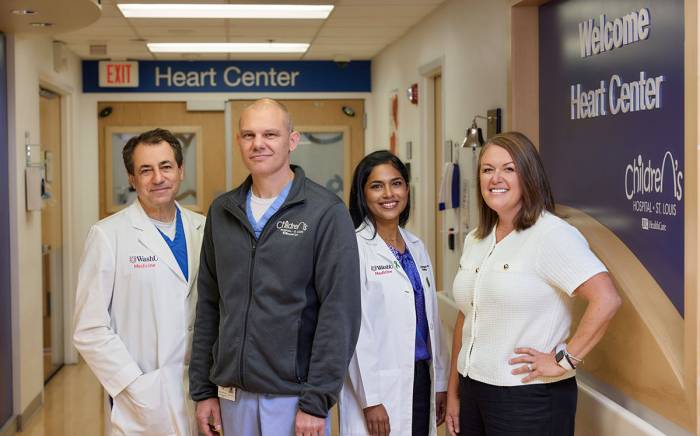Congenital heart defect is the term given when one or more defects in the structure of the heart are present at birth. Approximately eight out of 1,000 infants are born with some type of congenital heart defect. In the past, being born with a heart defect meant a shortened lifespan; however, advances in medical technology now offer the chance for longer life expectancy.
Two of the more common congenital disorders are ventricular septal defects and atrial septal defects, or VSD and ASD, respectively. Both are abnormal openings in the wall between the side of the heart that pumps oxygen-poor blood to the lungs, and the side that pumps oxygen-rich blood out to the body.
A VSD is a hole that occurs in the septum, or wall, that lies between the left and right ventricles, or lower chambers. An ASD is a hole that occurs in the septum between the left and right atria, or upper chambers. In both cases, oxygen-rich blood from the left side seeps into the right side. This decreases the amount of circulating oxygen and puts additional strain on the heart and lungs.
A patent foramen ovale, or PFO, is a type of ASD. The foramen ovale is a natural opening that exists between the right and left atria in the fetal circulatory system. The hole usually closes after the infant takes its first breath. If it fails to close, it is considered patent, or open. A PFO does not always cause health problems.
Much less common, but potentially more serious, is a patent ductus arteriosus, PDA. The ductus arteriosus is a normal structure in the fetal circulatory system that allows blood to bypass the fetal lungs, since the lungs are not needed for respiration while the fetus is in the womb. This channel normally closes after birth. If it remains open, blood will flow from the aorta into the pulmonary artery. If the hole is large enough, it may lead to heart failure.
Heart defects can also include narrowed or constricted blood vessels. One of the more common types of vascular defects is coarctation of the aorta. A narrowed or pinched aorta forces the heart to work harder to deliver blood. Eventually, the overload will damage both the heart and the aorta.









